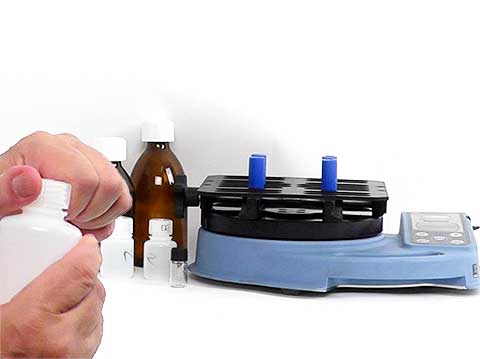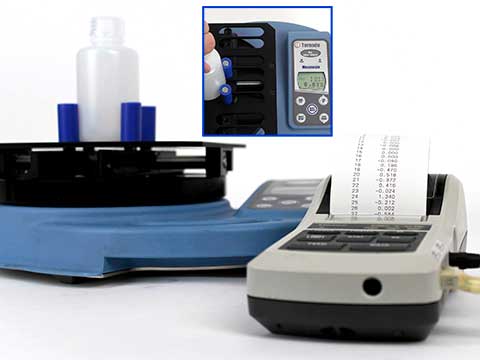Error message
Warning: file_get_contents(http://ipinfo.io/3.17.176.60/country): failed to open stream: HTTP request failed! HTTP/1.0 429 Too Many Requests in include_once() (line 656 of /home/closuretesting/public_html/sites/default/settings.php).ASTM D2063 D2063M − 10 (2012) Standard Test Methods for Measurement of Torque Retention for Packages with Continuous Thread Closures Using Non-Automated (Manual) Torque Testing Equipment
Measuring the torque retention of continuous thread closures with matching finishes
These ASTM test methods evaluate the torque retention of continuous thread closures on containers, with matching finishes, for predetermined environmental conditions over time. These methods do not cover CRCs and require non-automated torque measuring instruments.
This ASTM standards describes two test methods:
- Test Method A: Static Evaluation—At predetermined time intervals, the removal torques of representative samples of a container/continuous thread closure system, previously stored at various environmental conditions, are measured.
- Test Method B: Dynamic Evaluation—Practice ASTM D4169 is used to develop a uniform system of evaluating the ability of primary packages, in the shipping units, to withstand the distribution environment. At the end of predetermined distribution cycles, the removal torques of representative samples of a container/continuous thread closure system are measured.
Torque meter, if used, will have a scale where the anticipated torque readings are not less than one-third of the maximum range of the scale for the container/continuous thread closure system to be evaluated. The instrument should be calibrated according to ASTM D3474. Torque results will be available in a visual format - for example, a digital readout.
At least ten previously unused closure container system specimens must be tested. Each should be filled with the specified volume or weight of product (or equivalent materials).
Test Method A—Static Evaluation:
- Select the minimum application torque as recommended by the closure manufacturer.
- Firmly position the container such the axis of rotation of the closure is concentric with the centre of the torque tester. Exercise care in positioning, to avoid distortion.
- Avoiding contact with the fixed component, grip closure and rotate to tighten it at a constant and uniform rate, to the predetermined application torque. Release upon reaching the desired torque, as indicated on the display.
- At the end of each time period, determine the removal torque for each test sample.
- Determine the removal torque for by positioning the container in such a manner that the axis of rotation of the closure is concentric with the centre of the measuring device, take care not to distort either component.
- Avoiding contact with the fixed component, grip the closure and rotate it uniformly, at a constant rate until it rotates freely. Note and record the maximum torque required to loosen the closure.
Test Method B—Dynamic Evaluation:
- Follow the procedures of ASTM Practice D4169 for recommendations relevant to the number of test specimens, conditioning, and distribution cycles to be used to evaluate these test specimens. Calibrate the torque meter as above.
- Follow the above steps as in Test Method A for closure application.
- Measure and record the removal torque, as per Test Method A above, for one distribution cycle group immediately.
- Subject the remaining specimens to the selected distribution cycle and measure the removal torque. If information about long term storage is also required, then further specimens can be subjected to the required storage condition before removal torque measurements are made. Record the removal torque, the storage conditions, and interval before measurement.
Report to include the following:
- Method used.
- Closure manufacturer, complete material(s) construction of the closure and container.
- Thread finish.
- Application torque range and mean value.
- Removal torque range and mean value.
- Torque instruments used
Further information should also be reported, refer to the ASTM document.
This overview is intended to provide a basic understanding of the test procedure and suitable equipment to meet the standard. Please refer to the latest official ASTM test method D2063 / D2063M - 10 (2012) for more detailed information.
Contact Mecmesin

Got a question about this product?
Our technical sales engineers can help find the right solution for your testing requirements and provide online equipment demos with your samples.

